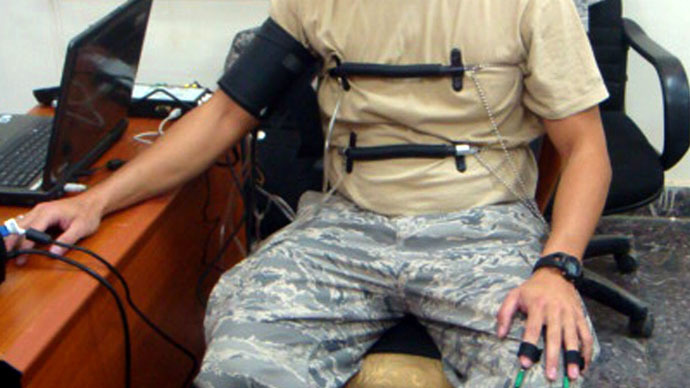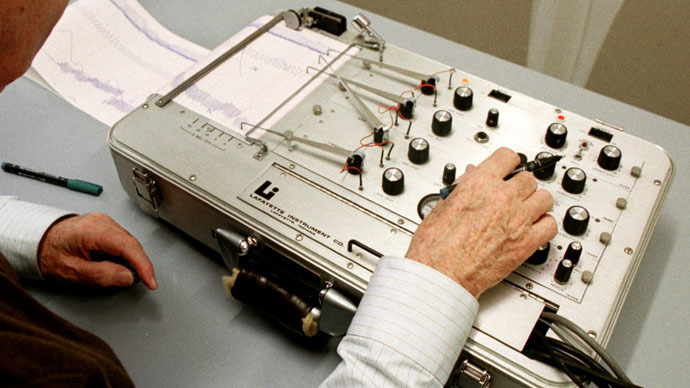Truth about lie detection: Scientists develop more accurate method than polygraphs

A breakthrough method of lie detection – an all-body motion capture suit – has a success rate in tests of over 70 percent. The invention by a team of British and Dutch researchers may soon drive out the nearly 100-year-old polygraphs.
The new technology, which “records the position, velocity and orientation of 23 points in the subject’s body”, was reported in a study called ‘To freeze or not to freeze’ by researchers from four major British and Dutch universities at the Hawaii International Conference on System Sciences at Kauai Island on Monday.
The brand-new approach is based on the idea that liars fidget more, so it also utilizes non-verbal communication, like the old-fashioned polygraph. Lie-detector tests are common among the police and intelligence agencies around the world, but the technology that relies on facial tics or heart rate could be completely changed in the next decade.
READ MORE: Sound of seduction: Scientists reveal men do tingle when hearing fertile female voices
“Decades of deception research show that the interviewer will tell truth from lies only slightly better than random, about 55 out of 100,” leading author Ross Anderson, professor of security engineering at Cambridge University, told the Guardian.
“The polygraph has been around since the 1920s and by measuring physiological stress induced by anxiety you can get to 60,” he added.

“However, it can easily be abused as an interrogation prop and many people are anxious anyway facing a polygraph on which their job or liberty depends.”
The new method provides law enforcers and security agents with a much more reliable way of gathering information. “We have known for a long time that torture does not work,” Anderson said, referring to the recent CIA torture report. “The takeaway message is that guilty people fidget more and we can measure this robustly.”
READ MORE: 'Enhanced interrogation' program was flawed, US Senate & CIA agree
The suit equipped with 17 sensors that register movement up to 120 times per second in three dimensions was tested in an experiment – with some tests showing reliability ratings exceeding 80 percent.
180 students and employees at Lancaster University were paid to either tell the truth or lie in the course of two tests. The first test was based on playing a computer game ‘Never End’ versus studying an information sheet about it, while the second one involved a lost wallet with a £5 ($8) note, which the participants were asked either to bring to a lost-and-found box or hide.
“Overall, we correctly classified 82.2 percent (truths: 88.9 percent, lies: 75.6 percent) of the interviewees as either being truthful or deceptive based on the combined movement in their individual limbs,” the report stated.
Anderson told The Guardian, “The paydirt was when we considered total body motion. That turns out to tell truth from lies over 70 percent of the time, and we believe it can be improved still further by combining it with optimal questioning techniques.”
The cost of full-body suits is around £30,000 ($45,600), what’s more, they can be rather uncomfortable. So, Anderson and his colleagues are now brainstorming possible alternatives.












